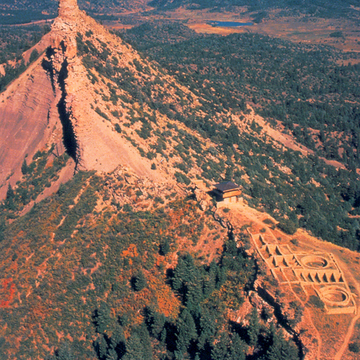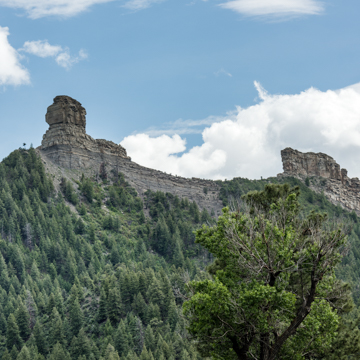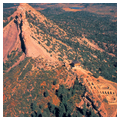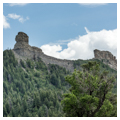The U.S. Forest Service offers archaeological tours of the ruins atop the 1,200-foot hill crowned by Chimney Rock. At this spectacular site, possibly a religious shrine, prehistoric Coloradans built the northeastern outpost of Anasazi culture. It represents both Chaco- and Mesa Verde–type cliff dweller constructions. Kivas, rectangular pueblo houses, and other ruins line the hilltop site of this prominent natural landmark near the Piedra River. Excavations since the 1920s have focused on this site as the easternmost of the cliff dweller settlements. Like the Anasazi at Mesa Verde, these Indians abandoned their village in the thirteenth century, apparently to resettle in Rio Grande River pueblos. Taos Pueblo Indians in New Mexico attach religious significance to Chimney Rock, likening its massive twin stone pinnacles to twin war gods. More than 200 architectural structures indicate that hundreds of Native Americans lived here, with a peak construction era from around 900 to 1125.
You are here
Chimney Rock Archaeological Area
If SAH Archipedia has been useful to you, please consider supporting it.
SAH Archipedia tells the story of the United States through its buildings, landscapes, and cities. This freely available resource empowers the public with authoritative knowledge that deepens their understanding and appreciation of the built environment. But the Society of Architectural Historians, which created SAH Archipedia with University of Virginia Press, needs your support to maintain the high-caliber research, writing, photography, cartography, editing, design, and programming that make SAH Archipedia a trusted online resource available to all who value the history of place, heritage tourism, and learning.




